Research Report
Sustainability and Food Retailing
A Practical Guide to Incorporating Sustainability and Supporting the Community During COVID-19 and Beyond
U.S. consumers are largely aligned on two sustainability issues. First, shoppers from all demographic groups — across age, income, education, region and even political leaning — agree that sustainability is an important issue. Second, these same shoppers say their local supermarket is an essential part of their community and a key partner in addressing sustainability concerns.
This study will help retailers understand shoppers’ attitudes toward sustainability and offers a tool to help individual operators create a plan of action aligned with their budgets and abilities.
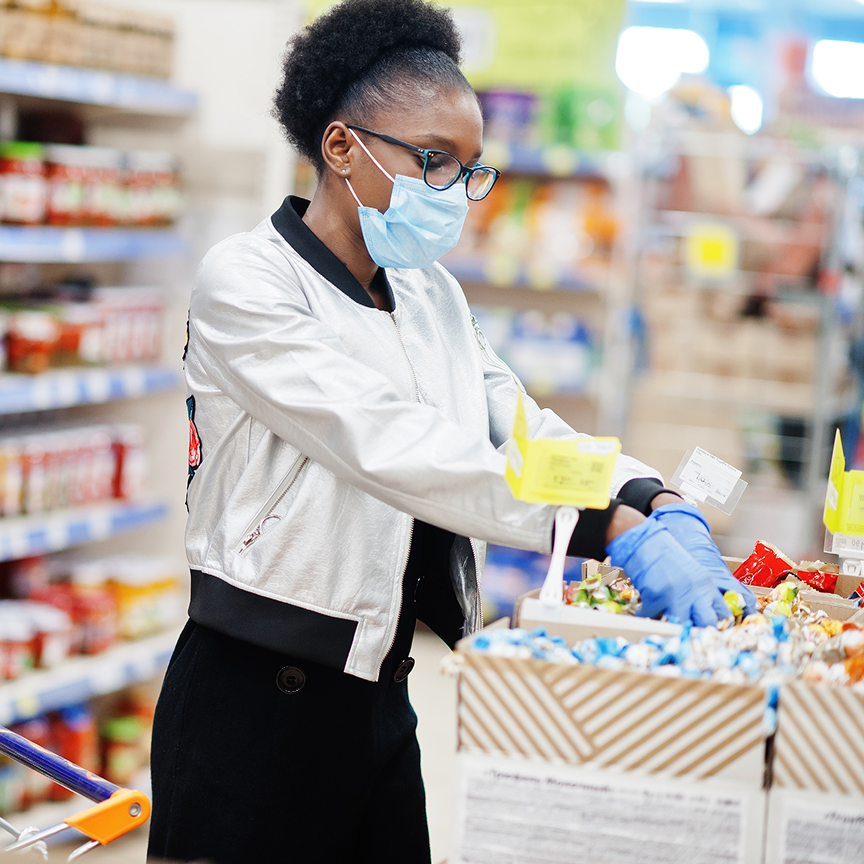
Introduction
Given the wide range of challenges—competitive, technological or consumer driven—facing the supermarket industry, it may be surprising that the members of the Coca‑Cola Retailing Research Council of North America selected sustainability as a study topic.
However, the council members see this as a critical issue for business going forward thanks to ever-increasing consumer awareness of the importance of environmental issues and the simple reality that the majority of product and packaging waste collected by consumers each week comes from their local supermarket.
With that in mind, the council felt the time is right for supermarkets to actively examine the opportunities and challenges facing the industry, individual stores, and even specific products to best align with growing consumer feelings.
Through this study, conducted in partnership with Murphy Research, the council found a number of important points:
- Despite the many areas of disagreement and divergent opinions among the American population, feelings on sustainability issues are almost universal despite differences in age, education, income status, and even political leanings. In other words, all shoppers share concerns about sustainability and agree on the need for the supermarket industry to address this topic in a variety of ways.
- The population segment most focused on sustainability is Generation Z, today’s young adults who form a large cohort soon to be among the supermarket’s most important shoppers.
- The Covid-19 pandemic reinforced for shoppers the importance and centrality of food retailers to their lives, their families and their communities as a source of incredibly important products. It also reinforced the importance of the industry taking action on issues of community importance including sustainability. In addition, shoppers specifically hope their local supermarket can help them practice greater sustainability.
- There is some evidence that strong environmentally friendly practices could become points of competitive advantage for supermarkets, especially as environmental concerns grow.
While it might have taken a backseat to these issues momentarily, we still strongly believe that sustainability is important and that importance will only continue to grow with time. We moved forward with this research this year because we believe it’s in our best interest to stay ahead of the curve on these issues as much as possible to maintain a competitive edge long-term.
Throughout the pandemic, sustainability and climate change remained at the forefront of Americans’ concerns.
At the same time, the Covid pandemic accelerated and illuminated a crisis of public confidence in both government and business that has been brewing for some time. Consumers show a clear need to see corporate leadership on social and environmental issues, and yet few actually trust business leaders to do what is right.
There is an opportunity to be a leader in this new business environment. Neglecting sustainability means leaving money on the table.
This will be even more important for building loyalty with the consumer of the future. Gen Z is more focused on climate change than any other generation in history. Every generation has their cause. Gen Z’s is the environment. We can start gaining their loyalty now by focusing more on the environment.
We hope that this report will help provide a better understanding of this issue and what your shoppers are expecting you to do in response. In addition, please try the tool we created (at the end of the report) to help you build a sustainability response that fits with your company’s capabilities.
Note to Reader
When we first started this project in early 2020, no one had any idea what the year had in store for us. This year’s research topic of sustainability was chosen well before the global pandemic occurred. But by the Spring of 2020, we knew that life would never be the same. It didn’t feel right to focus solely on sustainability. Unable to ignore the state of the world, we decided to incorporate additional areas on diversity, community, and the impact of COVID on food retailers.
We want to acknowledge up front that food retailers have been put through a lot this year. There are so many areas that we are still struggling with including but not limited to diversity, violence in stores, and the health of our workers. You are tired. We are tired. We hear that. We feel that.
We’re also incredibly proud of the work that food retailers have done over the past year. The rest of the country is too. This work shows that appreciation for food retail workers swelled during this time as shoppers realized for the first time that we are also essential workers.
We’re more alike than we are different
As demonstrated in the 2020 elections, the United States can feel intensely polarized.
We might feel (and might be) as polarized as ever, but this research showed us that there are many areas — sustainability included — where we agree more than we disagree.
We’re much more similar than we are different.
Sustainability is an area in which Americans are united. Sustainability is important.

Out of the following key attitudes, trying to reduce one’s impact on the environment was second only to being optimistic about life or going out of one’s way to recycle across almost all subgroups, including gender, age, ethnicity, income, subregion, neighborhood type, and political affiliation. In the case of Millennials, women, Asian and Hispanic individuals, people with an income of $50K or less, and Democrats, reducing one’s environmental impact was the most important out of the following list.
Personal Lifestyle Attitudes
Among total respondents
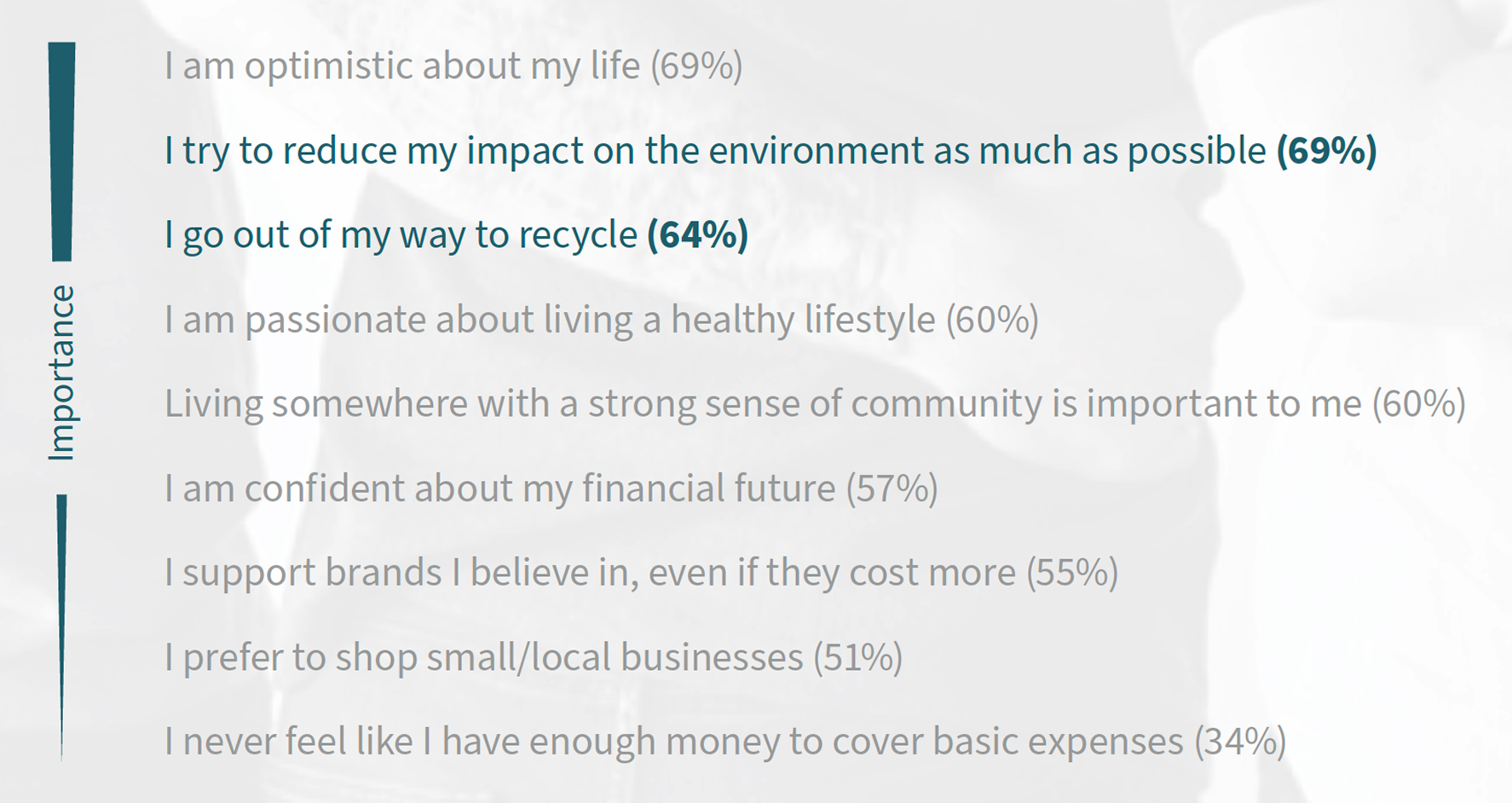
In addition, in terms of top personal goals, the following are consistently cited across all subgroups including gender, age, ethnicity, income, subregion, neighborhood type, and political affiliation:

Recycle
314*

Limit food waste
249

Use reusable bags
152

Recycle/donate old clothes
173
Other top goals that are consistent across all subgroups include:

Vote
314*

Purchase Made in USA
249

Advocate for a livable wage
152

Advocate for healthcare benefits
173
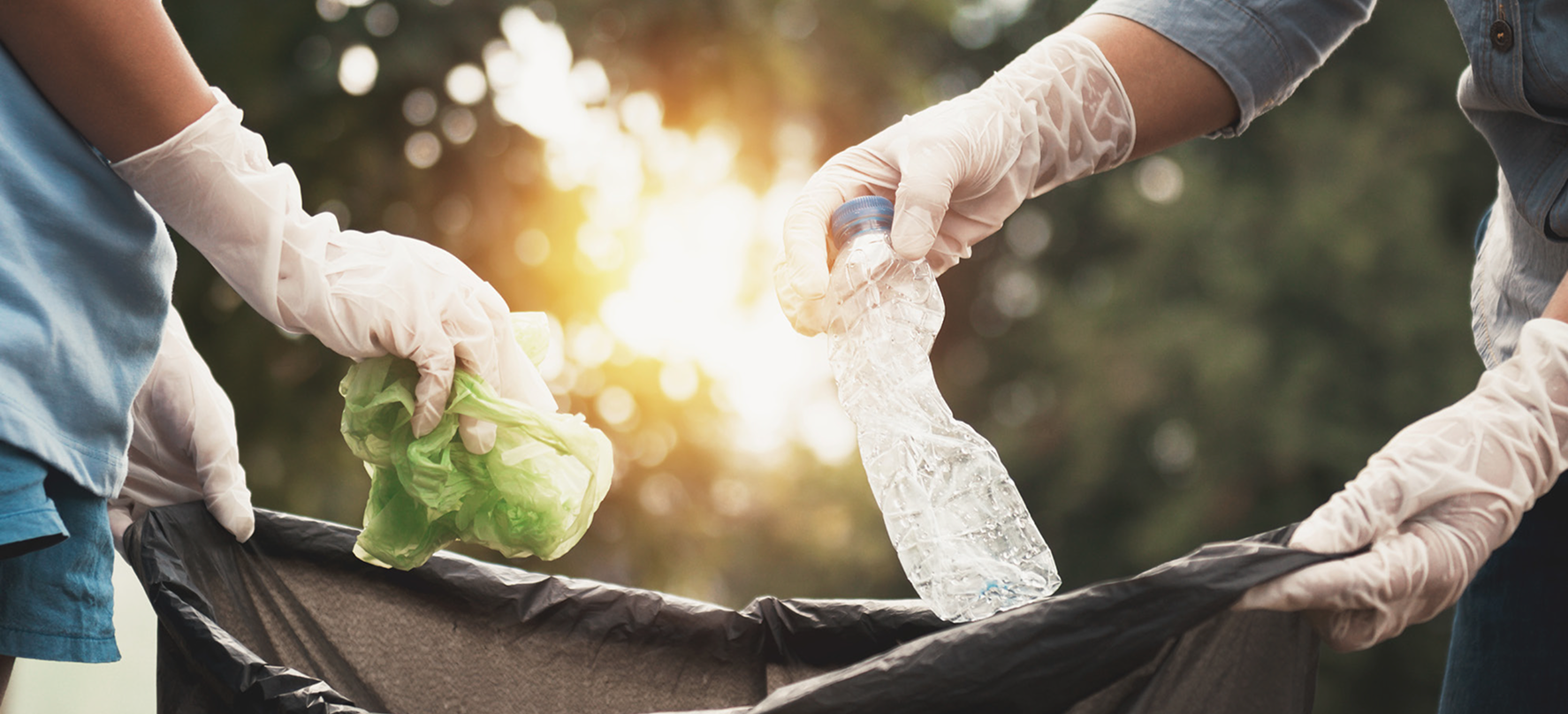
*How to read: Top personal goals were determined using a tournament followed by a ranking question with 44 goals to choose from and rank. In analysis, goals were assigned a point value depending on whether they were selected in the tournament, and how highly they were ranked. Scores were then averaged across all possible goals and indexed so that 100 is the average index score. Index scores above 100 are above average, and scores under 100 are below average. The data shown here is among total respondents, and top personal goal scores by subgroups can be found in the appendix.
COVID Context
Food retailers’ role in the community in the time of COVID
2020 was a year unlike any other.
The COVID-19 pandemic fundamentally altered our way of life. Spending extended periods of time at home shifted priorities and we changed how we went about our day-to-day activities. Consumers have steadily engaged in the following activities to try to stay healthy and safe over the course of the pandemic.

2020 brought out a mix of emotions from consumers around the pandemic.
Consumers have tried to find silver linings with spending more time at home.
But it’s also been a struggle with increased isolation and boredom leading to a decline in mental health.

By not being on the road so much, that’s also helping with the atmosphere.
Marsha
73, Indiana
One of the positives is that you really saw the reduction in pollution and everything. You saw how things could be.
Tracy
24, California
The environment has definitely gotten cleaner.
Amina
46, Indiana
One constant throughout the pandemic was grocery shopping.
Though food retailers extended curbside and delivery options, most people continued to shop in-store on a regular basis.

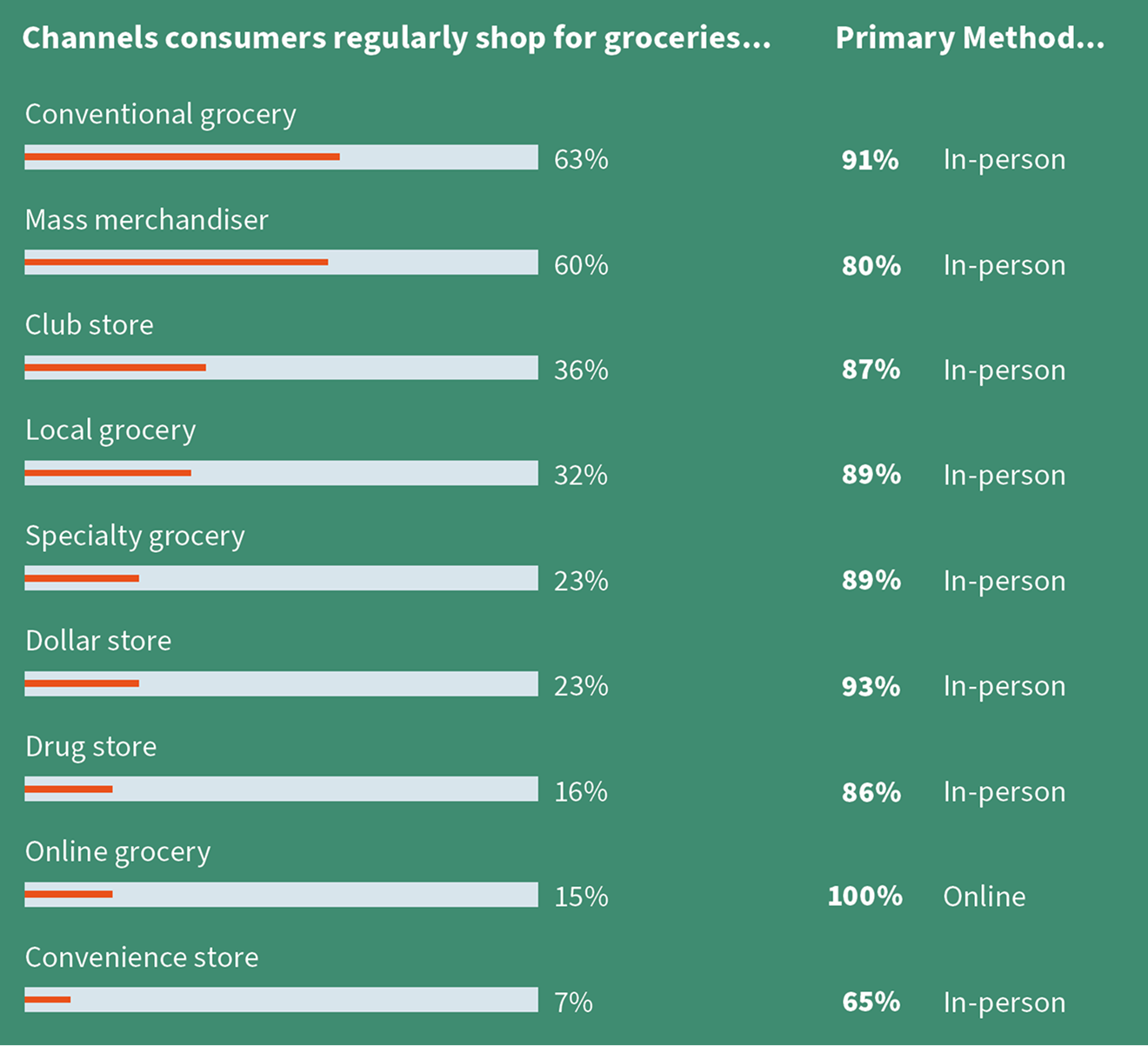
Now it’s picked up with masks, social distancing, and hand sanitizer. We feel safe going out. It’s back to our normal. What we’re doing now is the same that it was before the virus.
Daniel
30, Maryland
When it started, I did a huge grocery run that lasted almost a month. Being a senior, I can go during senior hours. I can go in weekly now.
Marion
64, Rhode Island
Food shopping is seen as a relatively safe activity during the pandemic.
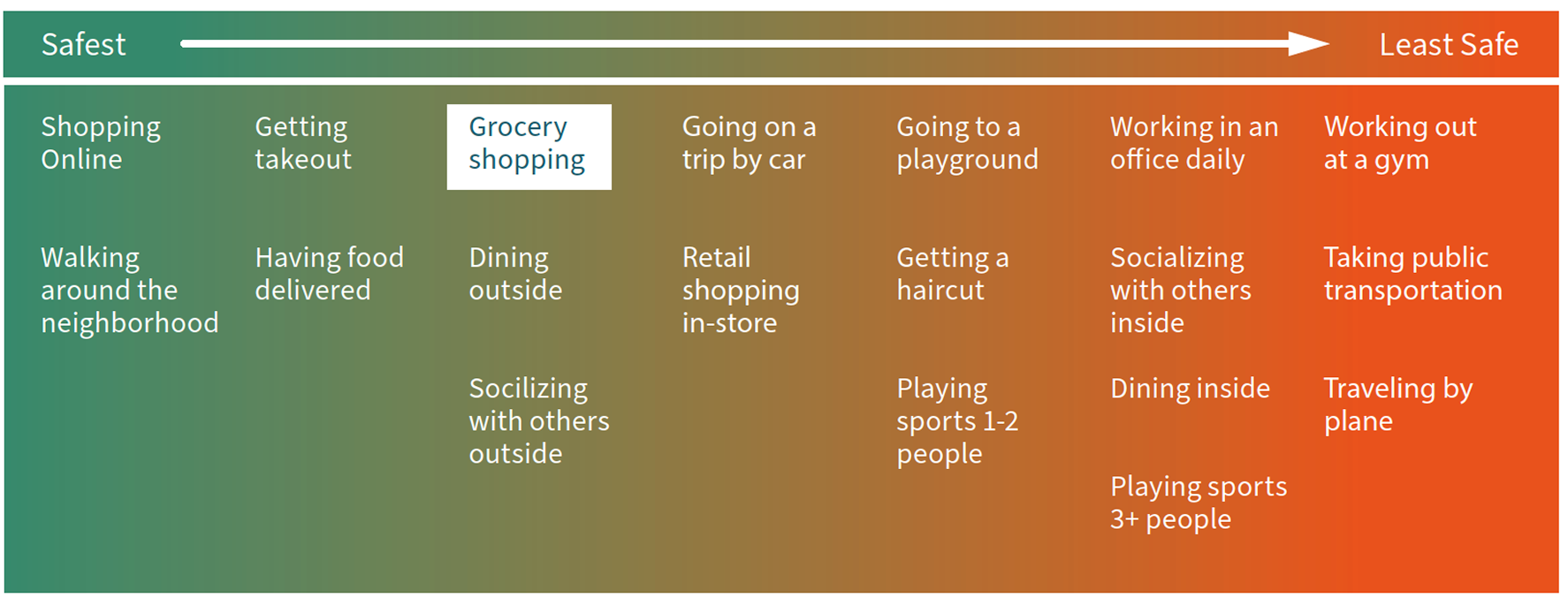
Consumers believe their food retailer adapted well and they continue to be highly satisfied with their primary retailer.
81%
are extremely or very satisfied with their retailer
63%
believe their food retailer adapted well
In the beginning of the pandemic I went a whole lot less, because of the lines and there were so many people. But now I’m back to my normal once per week.
Georgia
32, New Jersey
But, the pandemic has made shopping more stressful.
73%
of shoppers spend as little time as possible in-store
70%
say shopping is more stressful now compared to before
68%
worry about the health of employees
I am one of those people who should be a poster for extreme risk. Going to the market wasn’t on my top 10 things to do before, but it didn’t bother me. Now if I see people without a mask it angers me.
Michael
63, Massachusetts
I’m less likely to go spontaneously depending on what I’m fixing for dinner. I tend to go just once a week. I get in, get what I need, and get out. I mostly can’t stand the mask stuff, so I make it a quick trip.
Karen
64, South Carolina
Convenience and value still drive retailer selection, but safety and cleanliness became increasingly important during the pandemic.
The pandemic put the supermarket back in the center of the community as appreciation for employees and local retailers grew.

In their own words...
I think they are one of the unsung heroes in this pandemic, they are essential workers that are out there every day exposing themselves and working their best. Before it was general appreciation, we’re all working in society, we’re all doing our jobs. And, now, everyone else is at home and they’re out there every day making sure everyone gets the groceries they need. Definitely a greater appreciation.
Tracy
24, California
I was looking at it as someone being there to serve me before… but now being essential workers… I have more respect for them, and I understand that I don’t know what they’ve gone through.
Amina
46, Indiana
Honestly, I’ve thought way more about it… Just the fact that they’re having to work through this pandemic; they’re frontline employees. I’m just very grateful for them. My eyes have definitely been opened.
Lindsey
31, Kentucky
I speak more highly of the employees because they’re risking their lives to work and make sure everyone has everything they need.
Caroline
33, New York
I’m afraid to take the bus and they’re out there interacting with people every day. Bravo! Props to them.
Lior
25, Virginia
The cashiers are rock stars. They’re seeing everyone who comes in the store.
Steve
50, Massachusetts
I appreciate them more for working through the pandemic.
Douglas
70, Minnesota
Food retailers’ role in the community in general
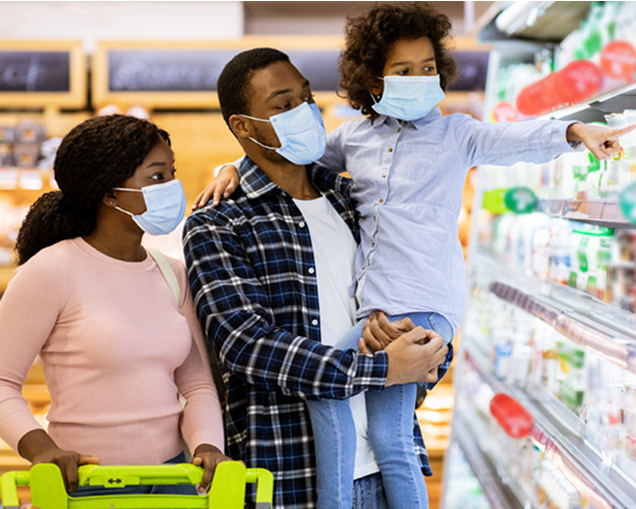
Food retailers have always been cornerstones of the community - the pandemic only heightened that sentiment. The majority of consumers want to see food retailers playing a role in their community, especially their local community.
Should food retailers have a purpose other than making money?

60% of consumers say it is important for food retailers to try to help their employees and local community in addition to making a profit. This sentiment is largely the same across regions and neighborhood types, generations, gender, income, ethnicity, and political party.
In their own words...
I think if they can do things to help the community - outreach for people who are homeless or people that are hungry. If they can team up and do something like that, I think they should.
Jennifer
40, Michigan
It’s nice when you see them sponsoring the little league team and giving a donation to local charity.
Michael
63, Massachusetts
I like to see grocery stores getting involved in the community and helping out.
Tracy
24, California
Consumers already differentiate food retailers based on their local impact.
Alongside traditional concerns such as good value, well-stocked, and convenience, consumers also rate sustainability and community attributes that specifically relate to food and employees within their top tier of importance.
Key Supermarket Attributes
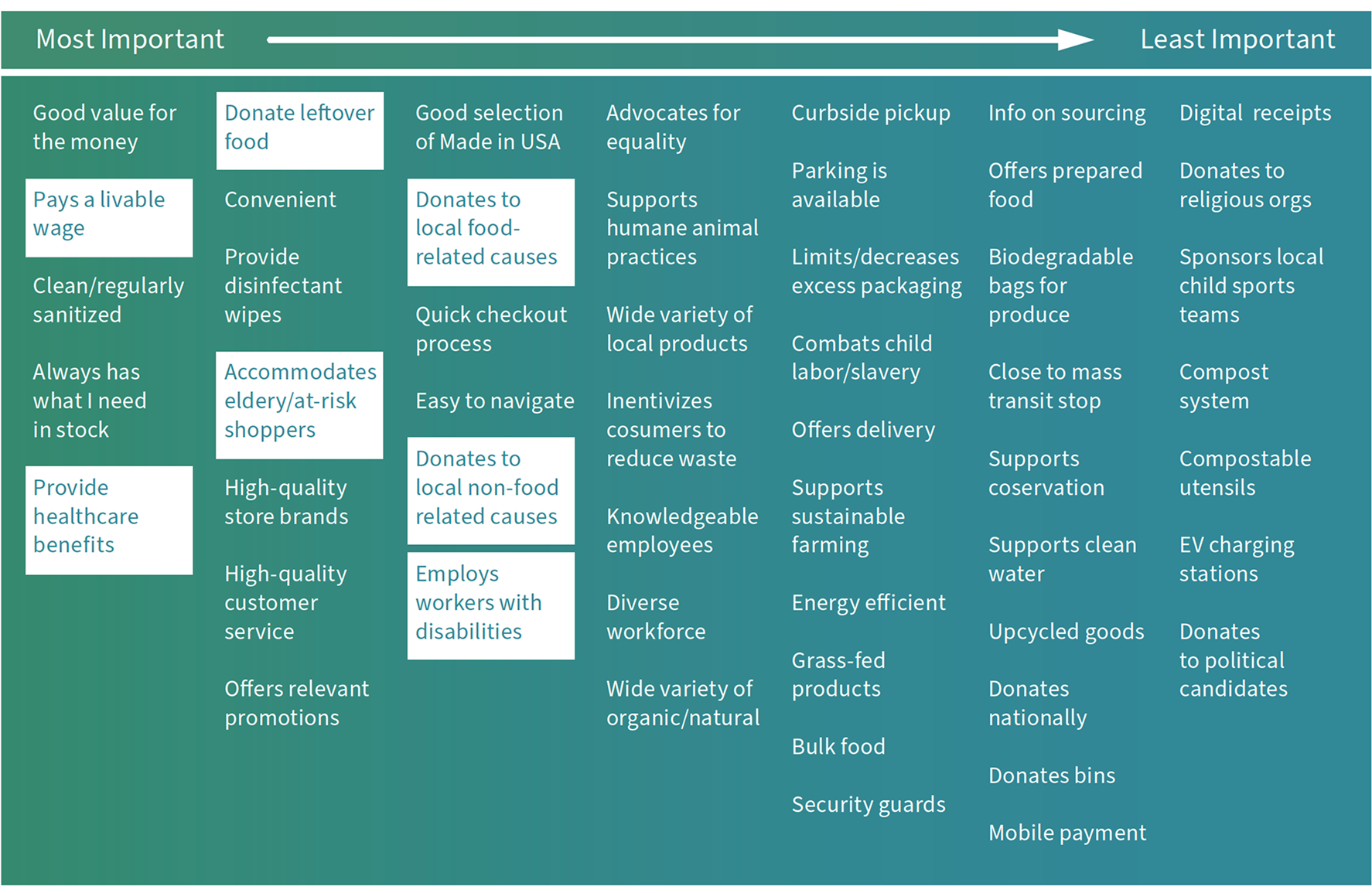
Food retailers’ role in the environment
Sustainability in a food retail setting is personal and emotional: Consumers are less concerned about the environmental impact of the retailer itself and are more concerned with their own environmental impact when they’re in the store because the supermarket is where they accumulate most of the products that lead to their personal waste.
Consumers do the best that they feel they can. Actions that are perceived to have a negative impact on the environment evoke strong feelings of guilt. Actions that are perceived to have a positive impact on the environment provide an emotional lift.
Food retailers are central to alleviating guilt about not doing enough for the environment because it’s so central to the accumulation of personal waste.
There’s an opportunity for food retailers to educate consumers on how to have the most positive impact when shopping. Consumers are a captive audience and they are willing to learn!
In their own words...
Purchasing any groceries, whatever I get I try to look at the packaging and pay attention to what it’s made of. I want to have something that’s going to be recyclable or will break down like glass. I’m conscious of it but I don’t always do it 100%. I still use straws sometimes.
Diana
58, California
It’s not something that is totally in my head ever. It’s not that I’m not a proponent of what is going on in that movement. It’s like losing weight. I don‘t have it in my head to lose it. I don’t have the environment in my head when I’m shopping.
Ronn
72, Pennsylvania
I definitely think about it, but I’m not very good about it. We try to recycle as much as possible. Using plastic bags, it gets to me, but at the same time I haven’t done anything about it.
Lindsey
31, Kentucky
This is way bigger than my little 5 minutes of extra time on the subway or walking. We’re talking about an impact years down the road, and I want to help take care of that.
Wade
46, New York
Ideologically, it’s very important to me. But in practice I’m still guilty in that I tend to let price push what I purchase more so than product sustainability.
Tracy
24, California
[I think about sustainability] more so than I did, but I’m still not 100% there. I still buy stuff in plastic.
Marsha
73, Indiana
Consumers prioritize what they’ve been taught will help limit environmental impact, which mainly leads to focusing on recycling and avoiding plastic bags. Consumers are also interested in limiting their food waste.
Personal Goals & Priorities
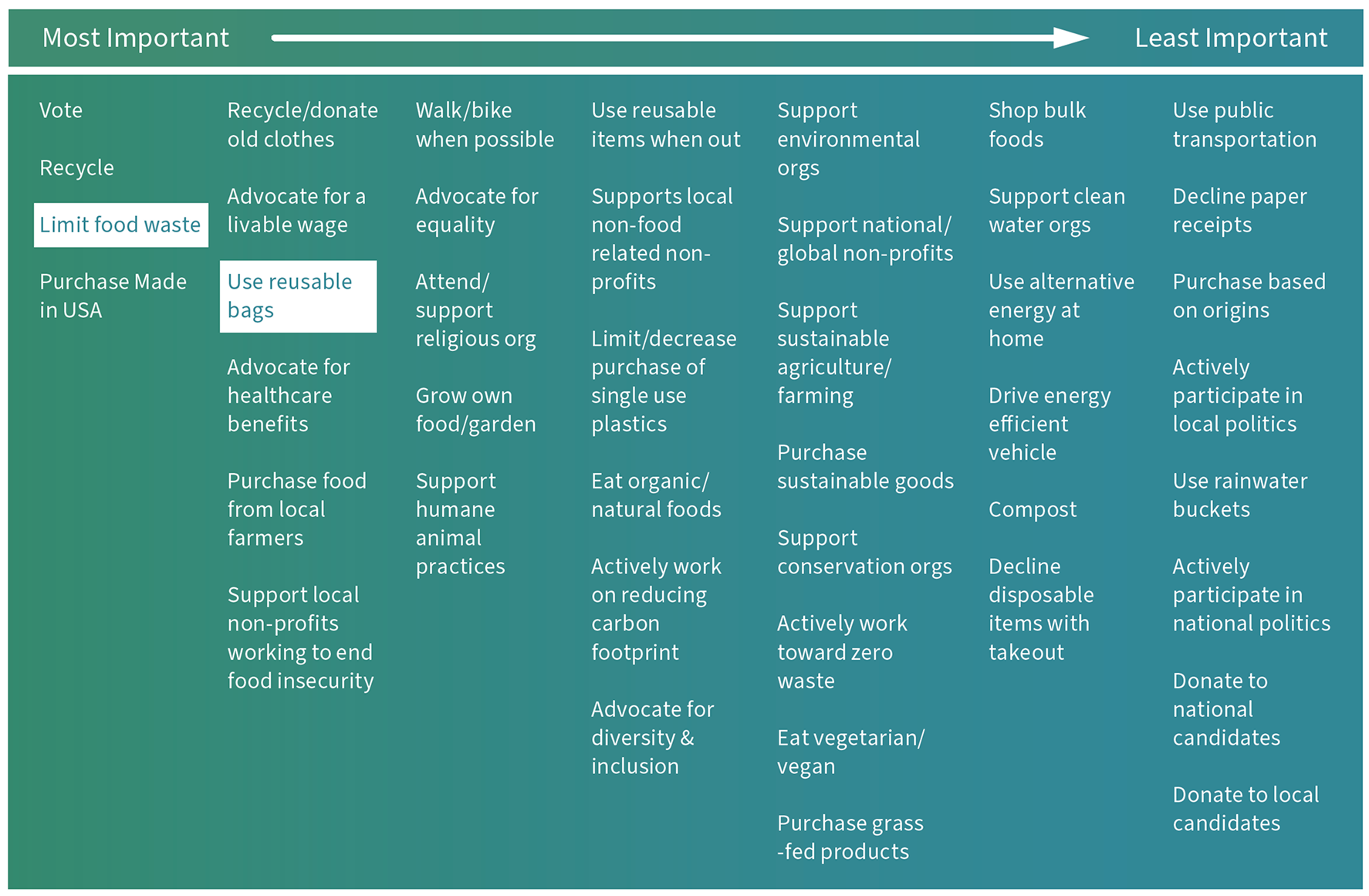
Will making changes impact the bottom line?
Yes, it will impact the bottom line. Consumers are willing to put their money where their mouth is. They are willing to pay an average of 4% more at a food retailer that implements initiatives to support their community and the environment. It could also become a competitive advantage, by demonstrating to shoppers that your store is aligned with their concerns and values. That could lead to greater store or product loyalty!
Even if it’s not universally expected, helping the community and environment is universally seen as a good thing for a company to do.

Changes retailers can make
Start local and focus on food.
Food-related causes are seen as the best fit and most important initiatives for food retailers to embrace. Consumers across the country from all different backgrounds prioritize the following initiatives above the rest:

Donate food that is close to expiration to food banks
380*

Partner with local food banks or food-related non-profits
264
If you don’t have similar programs, think about starting them, as they’re most important to consumers. This became especially important during the pandemic, when consumers were acutely aware of food insecurity and the ripple effects school closures were having on food insecure children.
If you’re already working with local food banks or non-profits, be sure to let your consumers know! Most consumers are not aware of the good work their local stores are doing to make sure their neighbors don’t go hungry, but it’s important to them.
*How to read scores: Key initiatives were determined using a tournament question. In analysis, initiatives were assigned a point value depending on whether they were selected in the tournament across rounds. Scores were then averaged across all possible initiatives and indexed so that 100 is the average index score. Index scores above 100 are above average, and scores under 100 are below average. The data shown here is among total respondents, though analysis was conducted to ensure that key initiatives were prioritized across subgroups.
In their own words...
If they want to donate food for their tax write off, God bless them. I know it’s for their tax write off. But it does make me happy that they’re not letting the food spoil. There’s too many people starving in the world.
Stephen
72, Nebraska
Food waste is also a huge thing, so doing their best to solve that, like donating food to a homeless shelter. Donate to food waste. That makes more sense to me than donating money to the boys and girls club.
Lior
25, Virginia
You have all this food that would make a gourmet meal to a homeless person. I remember throwing away trash bag after trash bag of produce, meat, dairy, when that could be given to a homeless person.
Ari
19, Colorado
Food banks and city missions are easier to track locally and you feel like your money is going right to the cause, and they stay apolitical. There’s not a big agenda behind it other than providing food and clothes for those who need it.
Brian
59, Nebraska
Helping to provide food for kids that don’t have the means to now that they aren’t going to school [during the pandemic].
Lindsey
31, Kentucky
Maybe deliver groceries for free to people who were struggling to get food during the pandemic.
Jennifer
40, Michigan
Grocery stores should buy less or take the excess and give it to homeless in the community.
Tim
53, Texas
Help consumers help the environment
Consumers care about the environment.
They focus on the steps they’ve been taught to take such as recycling and limiting the use of plastic bags. The following initiatives are also very popular among consumers and should be prioritized.

Have recycling bins on-site
244*

Earn points/prizes for amount of waste saved through purchases and recycling
129

Provide biodegradable bags for produce
128
While most of these ideas are likely not feasible, consumers in communities that don’t have recycling collection come to their home would love to see their local store act as a recycling collection site. Anything that can be done to make recycling easier for local community members goes a long way.
*Note: Key initiative index scores shown above. Index scores above 100 are above average, and scores under 100 are below average. For a full explanation of how scores were calculated, see note on page 15.
The desire to lessen one’s impact on the environment is universal.
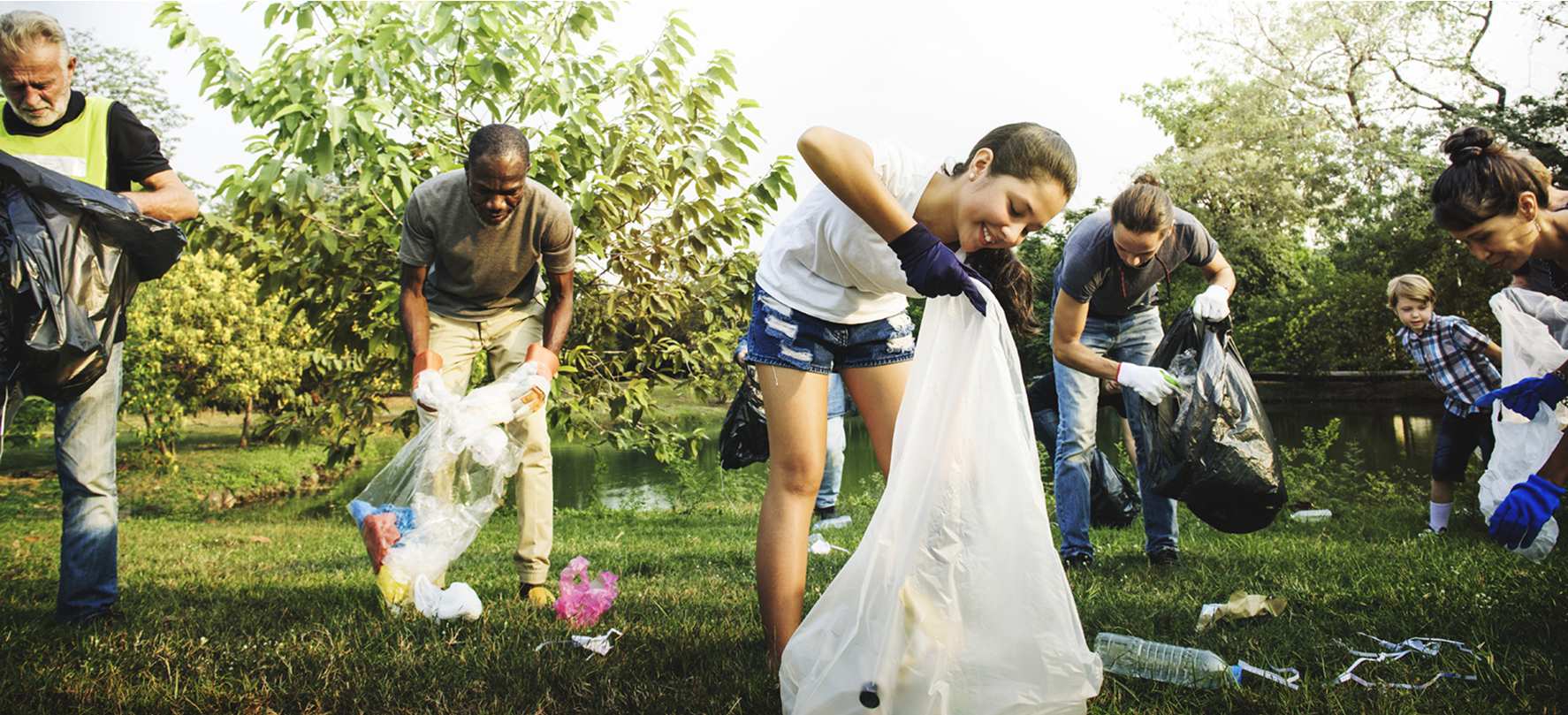
In their own words...
Younger generations prioritize it...
It’s very important. Because we live here! The decisions we make now impact… what will happen in the next 10, 50, 100 years. My little contribution is I try to recycle. I try to make sure it’s something I do consistently…Right now I’ll stick with that because I don’t want to put too much pressure on myself.
Georgia
32, New Jersey
I think it’s very important, I want to make sure the environment is safe and clean for the future generation. I try to recycle as much as I can. Any of our old electronics we try to dispose of in the proper facilities. We always try and upcycle. Empty containers we use for the garden or arts and crafts.
Caroline
33, New York
We have recycling set up here, we do bottles, papers, etc. [At school] one of the one big complaints… was that there is a lot of paper usage…that’s not needed. I helped to push an iPad initiative… to help reduce the amount of paper waste.
Tracy
24, California
...And so do the older generations.
We recycle in every way. We make a conscious effort to take care of the wildlife in our area. We carpool when we can, it’s kind of second nature. It’s not huge, but it’s something. We don’t go back in the trash and dig out things that might’ve been recyclable and I wish we could do better at that, but it’s not realistic. I know recycling truly has been proven to help the environment. Recycling makes me feel good, makes me a little bit more open minded.
Brian
59, Nebraska
I always recycle, I’m cutting down on our use of paper, I buy items in glass instead of plastic… I’m always trying to limit my impact. I buy local and organic, and I buy energy saving light bulbs.
Bonnie
62, Washington
I try to do things like have solar panels on my house. If I’m able to walk/bike over driving, I’ll do that. I try not to waste water, I recycle, things like that.
Tara
55, New Mexico
Plastic: what consumers don’t understand
Plastic bags are one of the biggest sources of tension and guilt in stores. Consumers have been taught for decades that plastic bags are bad, paper bags are better, and reusable bags are the best option for the environment. Because of this, they feel a strong sense of guilt and remorse when they use plastic in-store. Consumers strongly prefer that retailers take care of this problem for them. Consumers would prefer that retailers do away with plastic bags - either by offering only paper bags or doing away with all bags completely - rather than be charged 10 cents per bag.
Plastic technology has come a long way in the past decade. Plastic bags are not as bad for the environment as they used to be. But, consumers have not been educated on new plastic developments. If you are not planning on moving away from plastic bags, focus on educating consumers about the strides that have been made to make plastic more environmentally friendly. This will help alleviate the guilt consumers feel in store.
In their own words...
We have to use plastic bags at the grocery store at the moment, which is frustrating because I really try to limit my impact on the environment. I give my plastic bags to my husband to use at the church food pantry, so they are getting reused.
Tara
55, New Mexico
I haven’t really thought about it other than bringing reusable bags. I do that rather than use more plastic and paper...That’s where there could be more education from everybody to get people thinking about it more.
Marion
64, Rhode Island
I’ve been to natural grocers and they require you to bring a tote or they give you a cardboard box. I definitely think all grocery stores, instead of giving you plastic bags, could require the same thing - bring a tote or put it in a cardboard box.
Laura
31, Oklahoma
Now with delivery there’s a lot of plastic bags, which is really a big problem for the environment. If I order things from Amazon pantry or their grocery store, there’s a lot of paper boxes.
Alexandra
36, New Hampshire
Plastic bags - that’s a huge one. A lot of areas it’s better. Using plastic bags, it gets to me, but at the same time I haven’t done anything about it.
Lindsey
31, Kentucky
Do away with plastic bags and go back to the paper bags. I do use them. But I think that would be less on the environment, to get rid of plastic bags.
Marsha
73, Indiana
Environment would be nice, I know [my store] is eventually going to get rid of plastic bags and they talked about stopping paper receipts.
Jennifer
40, Michigan
Other popular initiatives that consumers would like to see retailers take on:

Label products that are locally made/grown
132*

Sell products in a wider variety of sizes to help limit food waste
124

Don’t sell products that endanger wildlife (e.g. bluefin tuna, palm oil)
111
*Note: Key initiative index scores shown above. Index scores above 100 are above average, and scores under 100 are below average. For a full explanation of how scores were calculated, see note on page 15.
How to connect with the Consumer of the Future
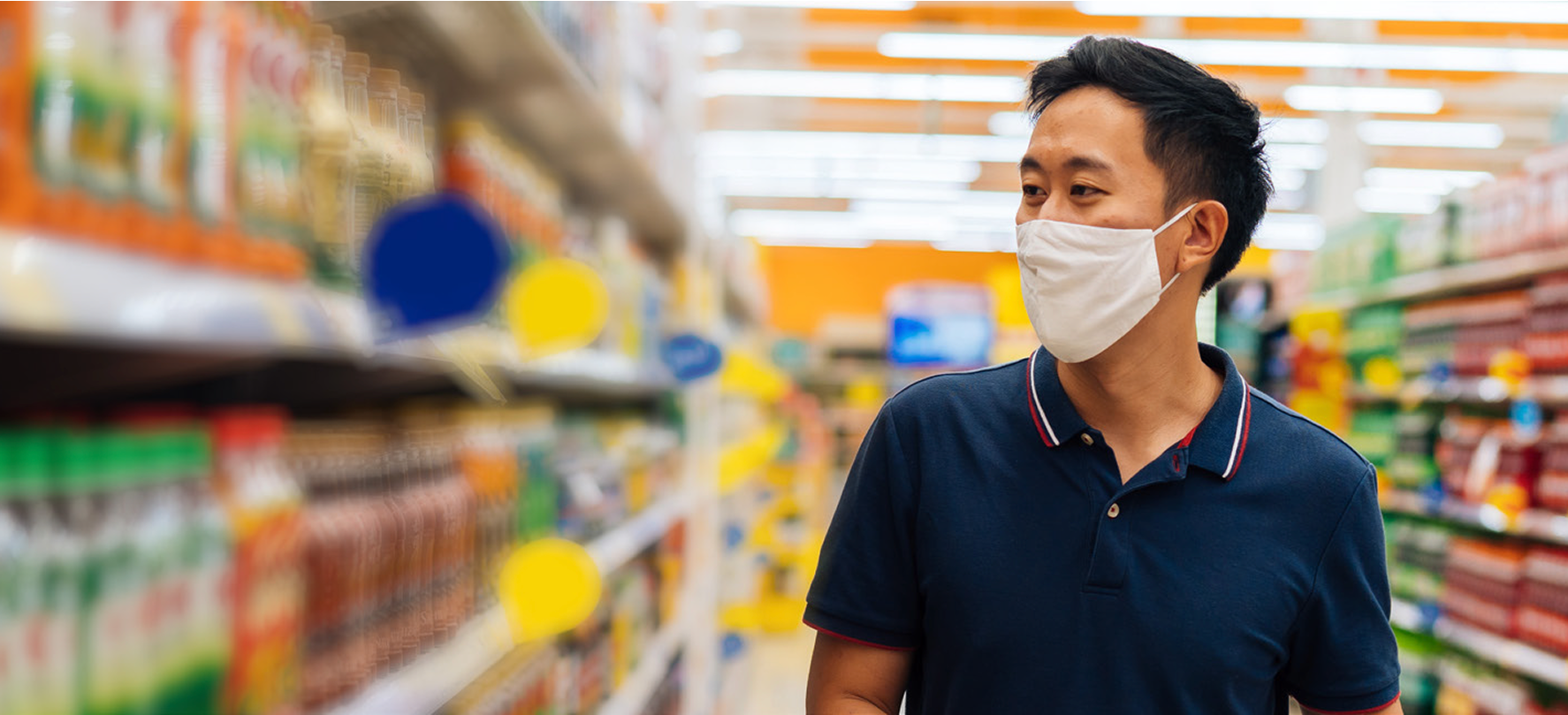
Younger consumers have always been more cause-oriented than older consumers. Every generation has their passion projects. For Baby Boomers, it was peace. For Millennials, it was international human rights.
Gen Z’s passion project is the environment
% Consider environmental sustainability at least most of the time when shopping:

We found that Gen Z is much more interested in climate-focused initiatives than older generations.
This is true in stores as well. Gen Z shoppers are more likely than other generations to want retailers to support conservation, support humane animal practices and take greater strides to limit the environmental impact of packaging, utensils, and bags.
Gen Z’s passion for sustainability extends to their shopping behavior.
Gen Z shoppers find it important for food retailers to support causes related to conservation and humane animal practices more so than other generations. As an added benefit, other efforts that will attract Gen Z shoppers such as limiting packaging and providing biodegradable bags and compostable utensils will help food retailers attract Millennials and Gen X shoppers as well.
Key Supermarket Attributes with Largest Significant Differences by Generation
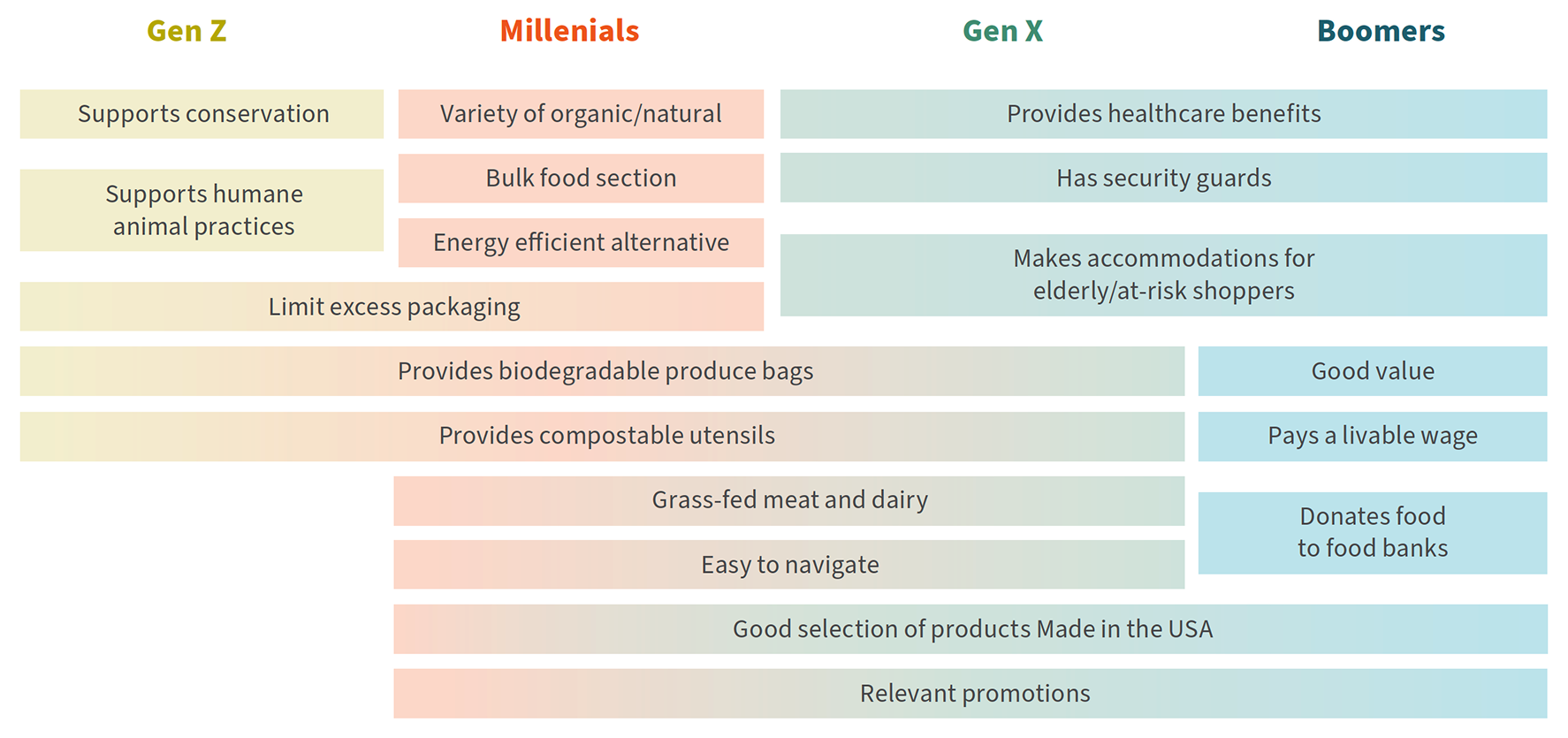
Gen Z shoppers are also more interested than others in the following retail initiatives, as they over index on relative importance of these initiatives compared to other generations:
- Have a section or aisle dedicated to sustainable products (155*)
- Sell carbon footprint offsets (140)
- Add doors on the refrigerated sections to conserve energy (118)
- Launch a reduce, reuse, recycle education campaign (113)
- Offer recycling for masks (102)
To connect with Gen Z long term, consider taking a stronger stance on sustainability and focus on initiatives that specifically limit waste and help curb climate change.
*Note: Key initiative index scores shown above by Gen Z. Index scores above 100 are above average, and scores under 100 are below average. For a full explanation of how scores were calculated, see note on page 15.
Appendix
Consumer Expectations of Food Retailers
Generational Differences




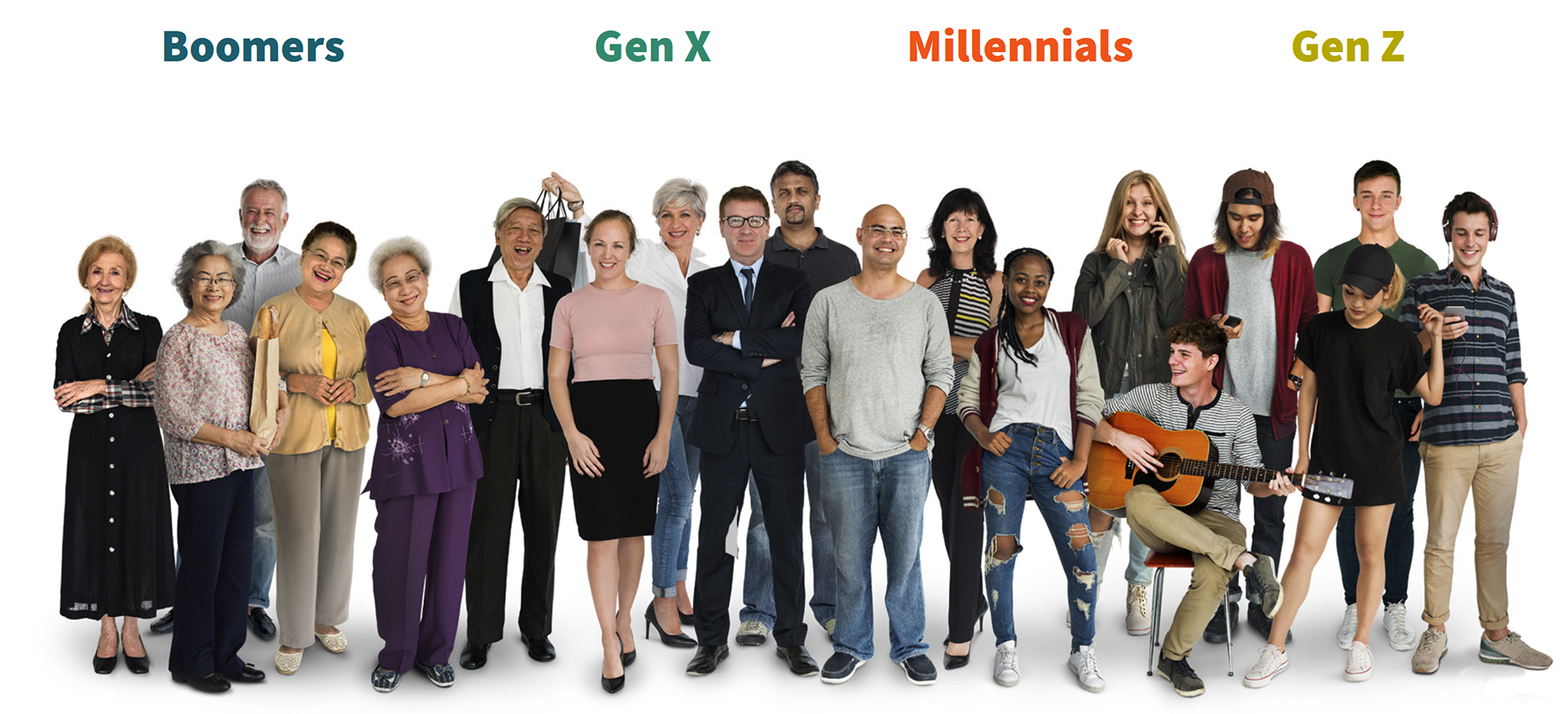
*Note: Key initiative index scores shown above by generation. Index scores above 100 are above average, and scores under 100 are below average. For a full explanation of how scores were calculated, see note on page 15.
Subregion Differences
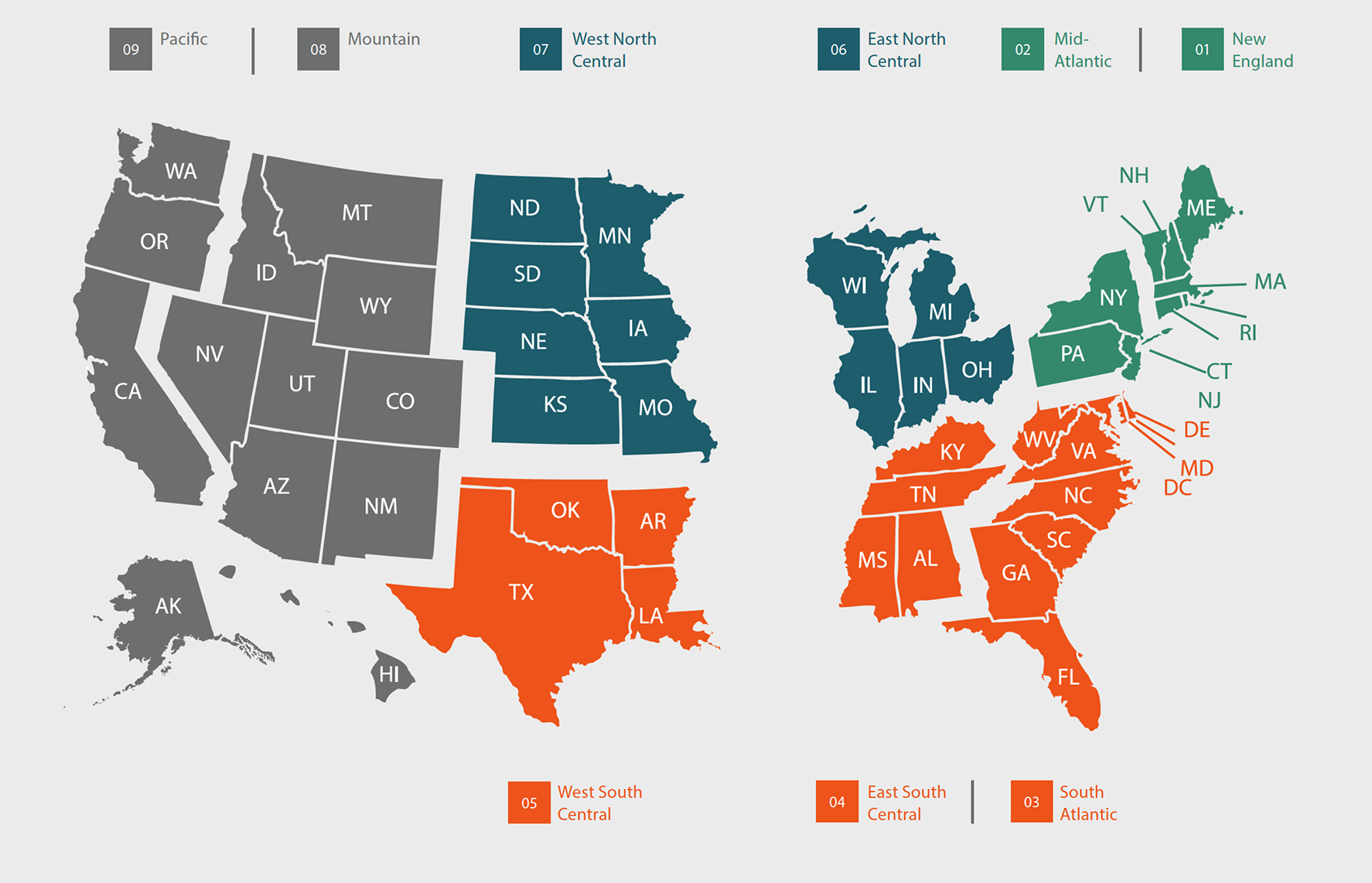
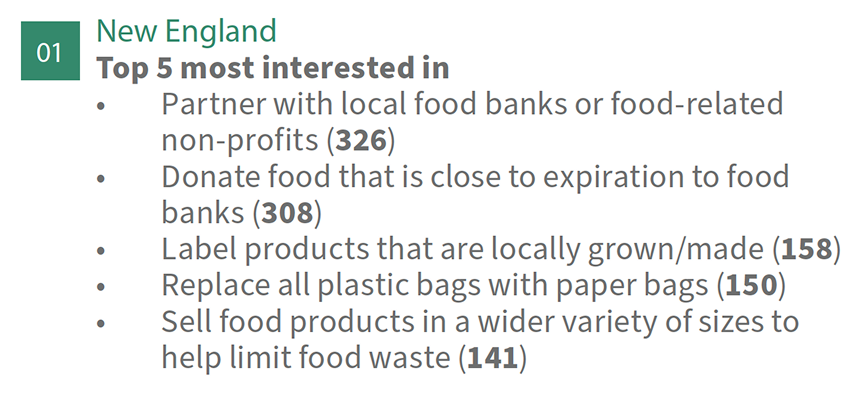
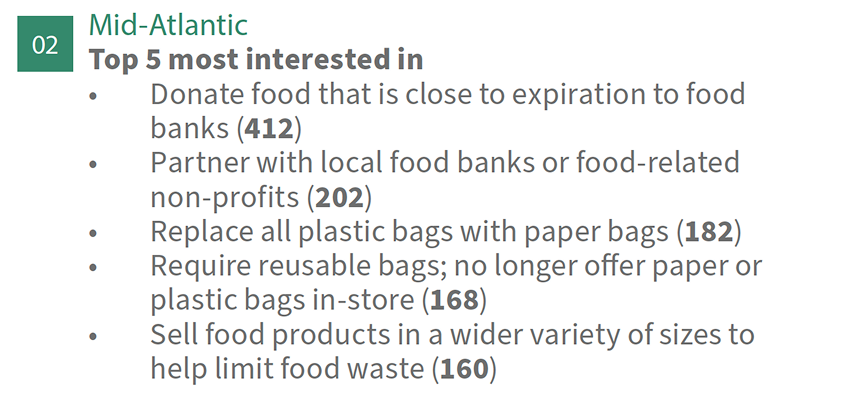

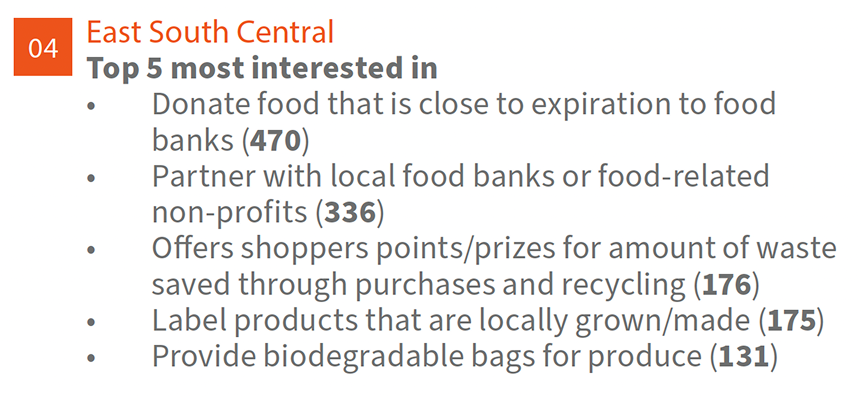
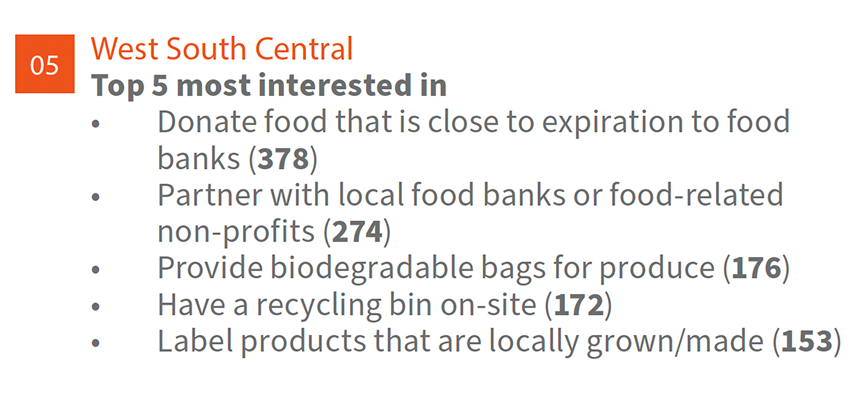
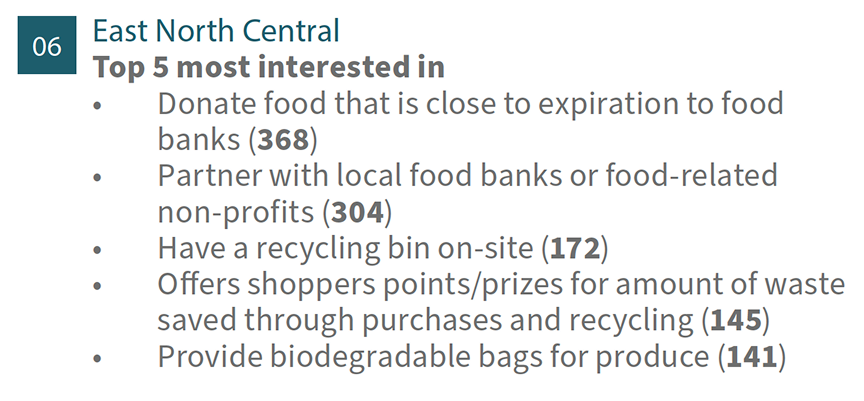
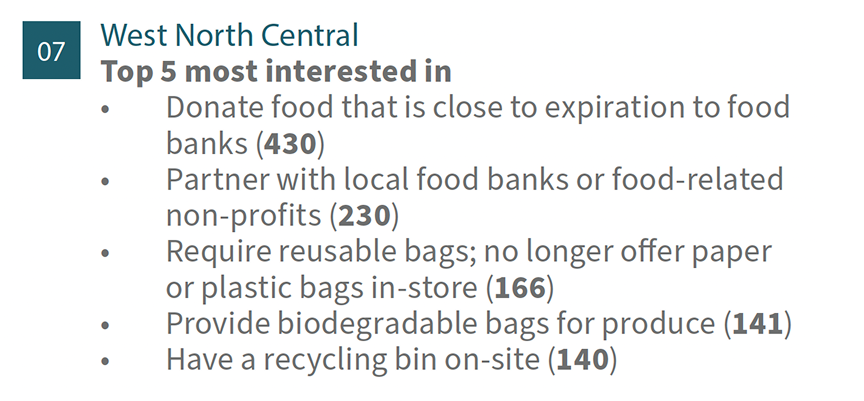
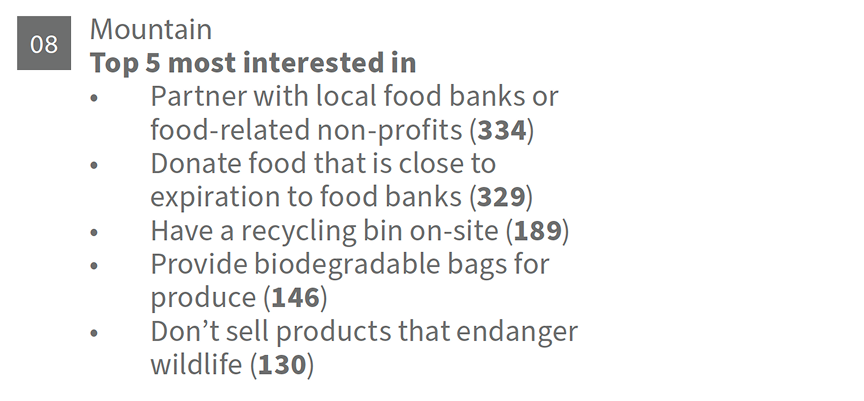
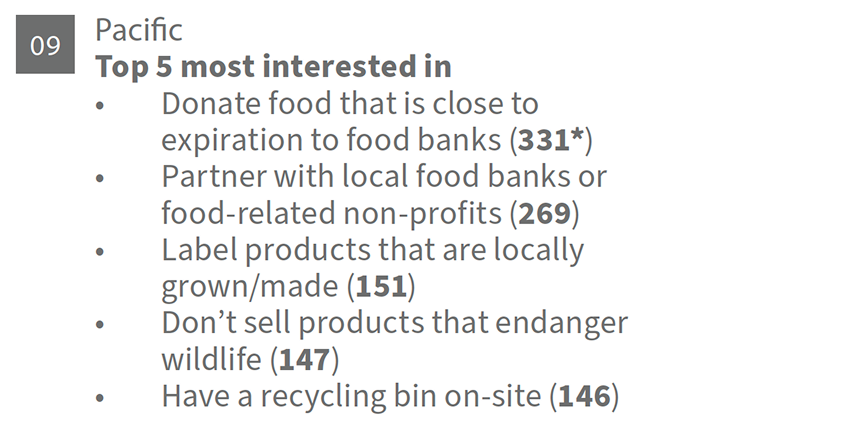
Top 10 Personal Goals by Generation
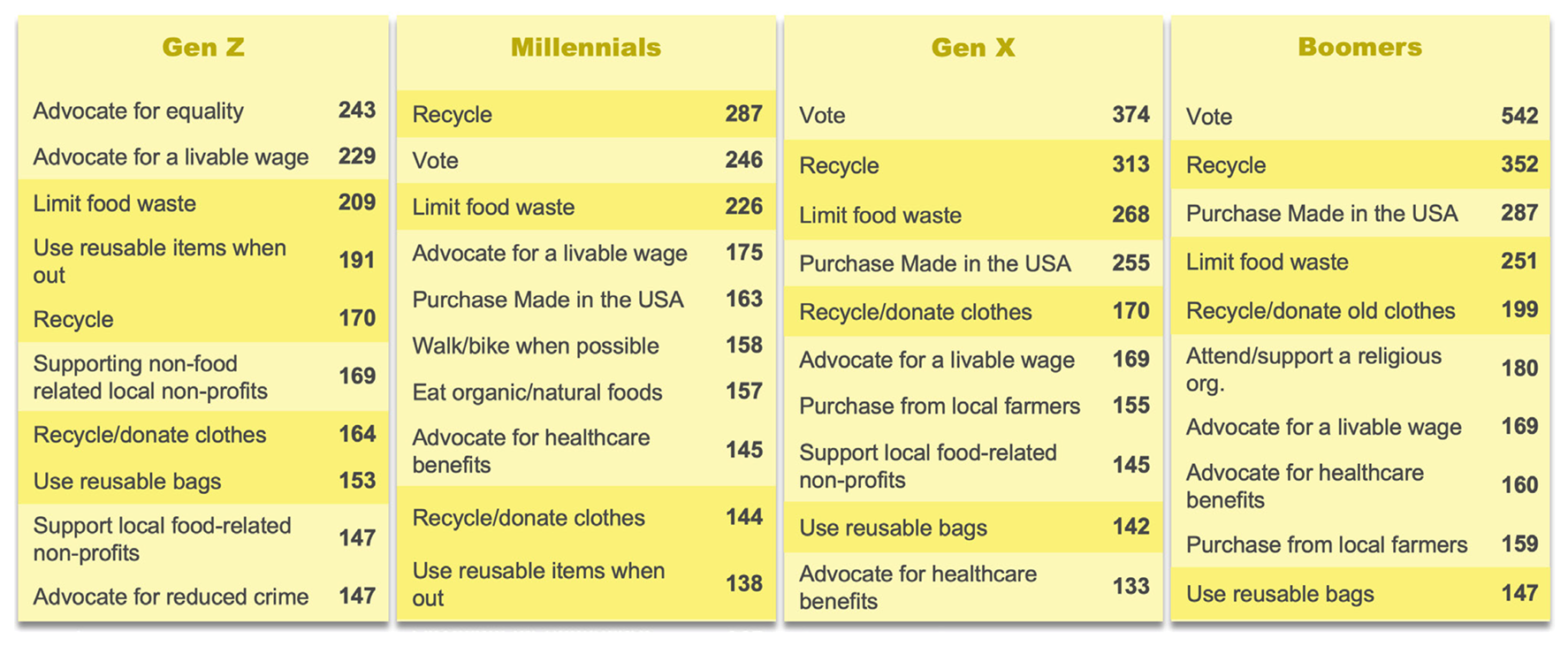
Top 10 Personal Goals by Annual Household Income
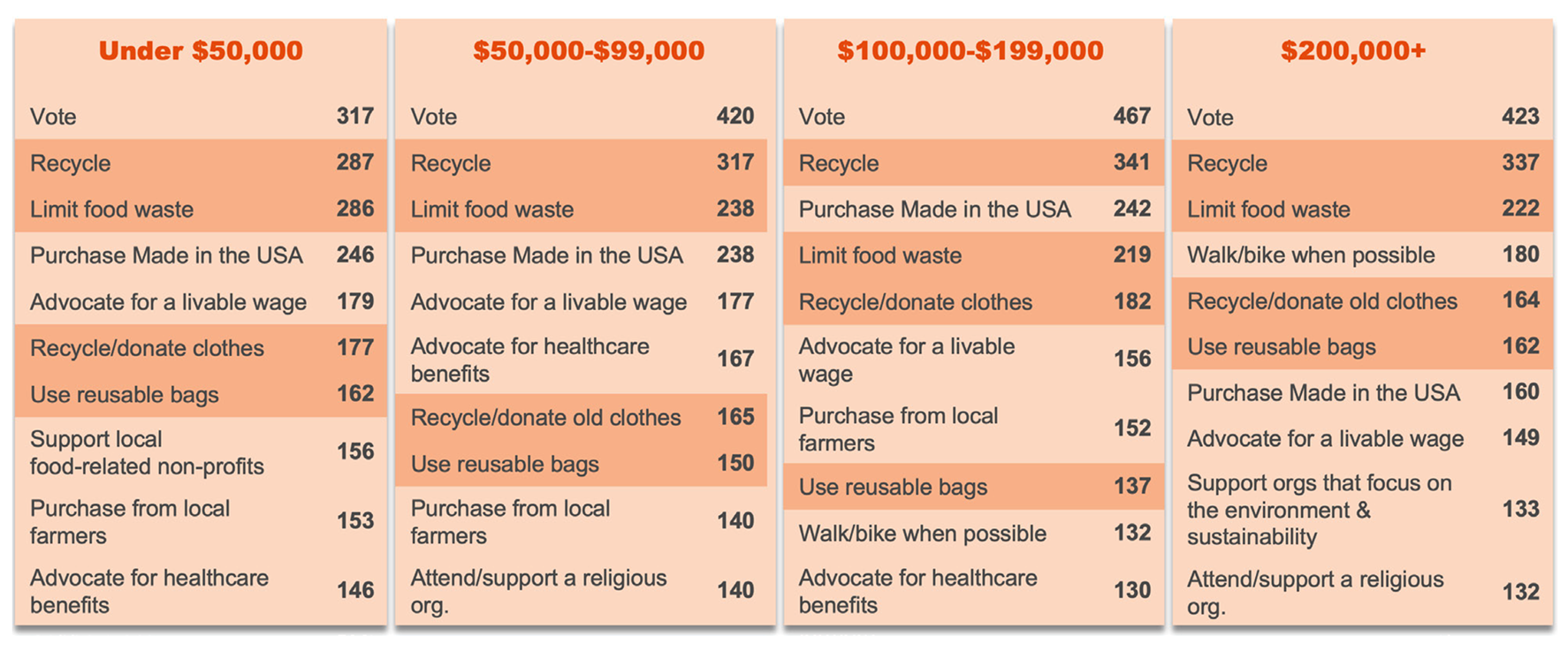
Top 10 Personal Goals by Ethnicity
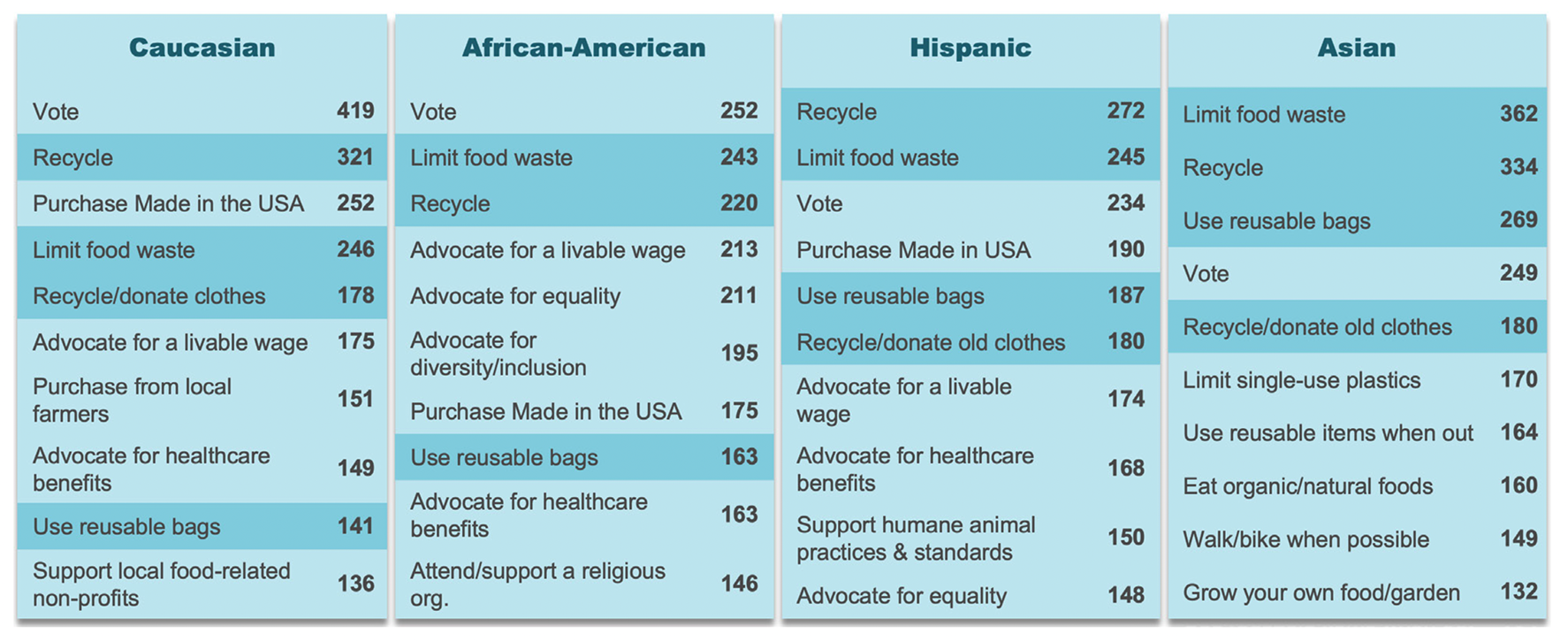
Top 10 Personal Goals by Political Affiliation
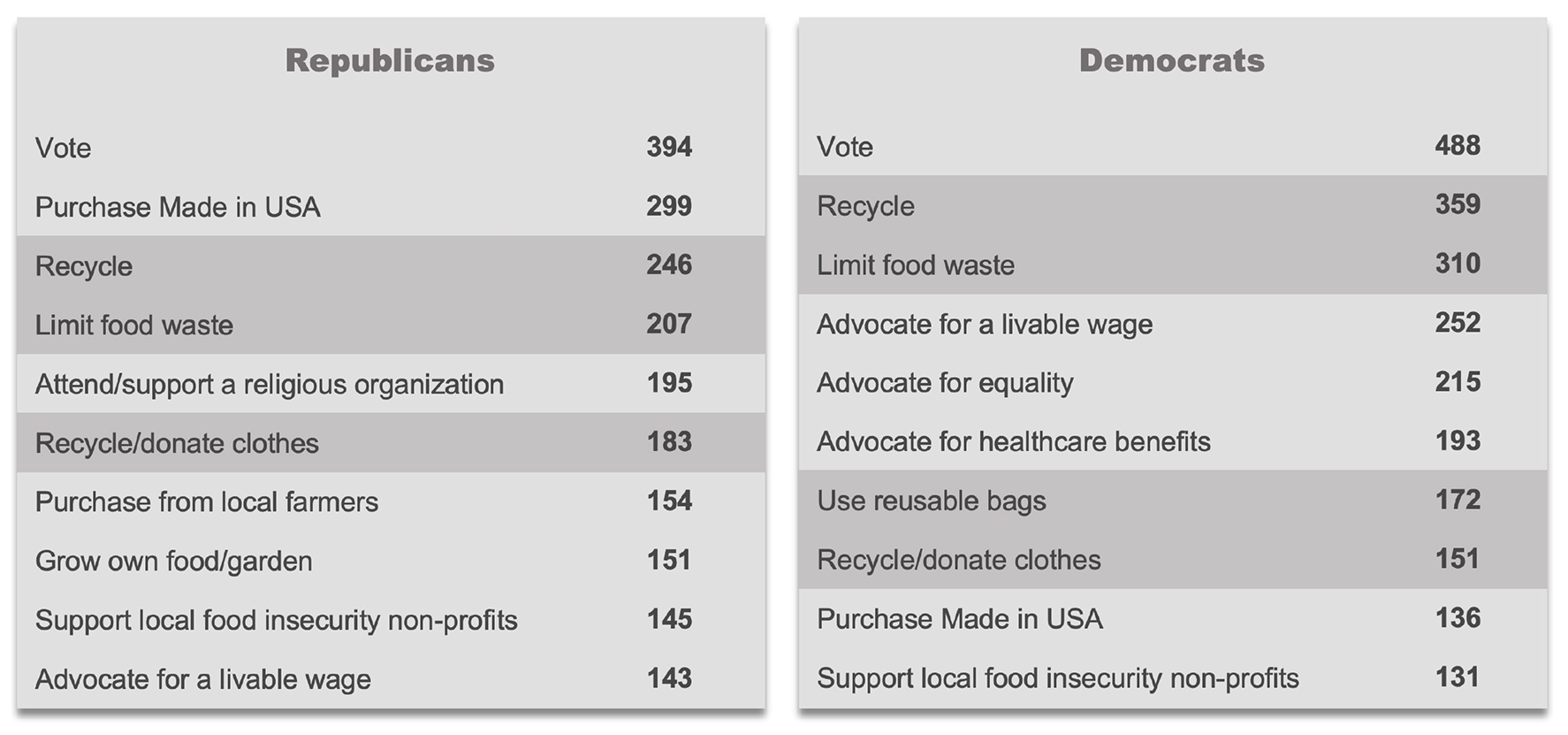
Top 10 Personal Goals by Subregion
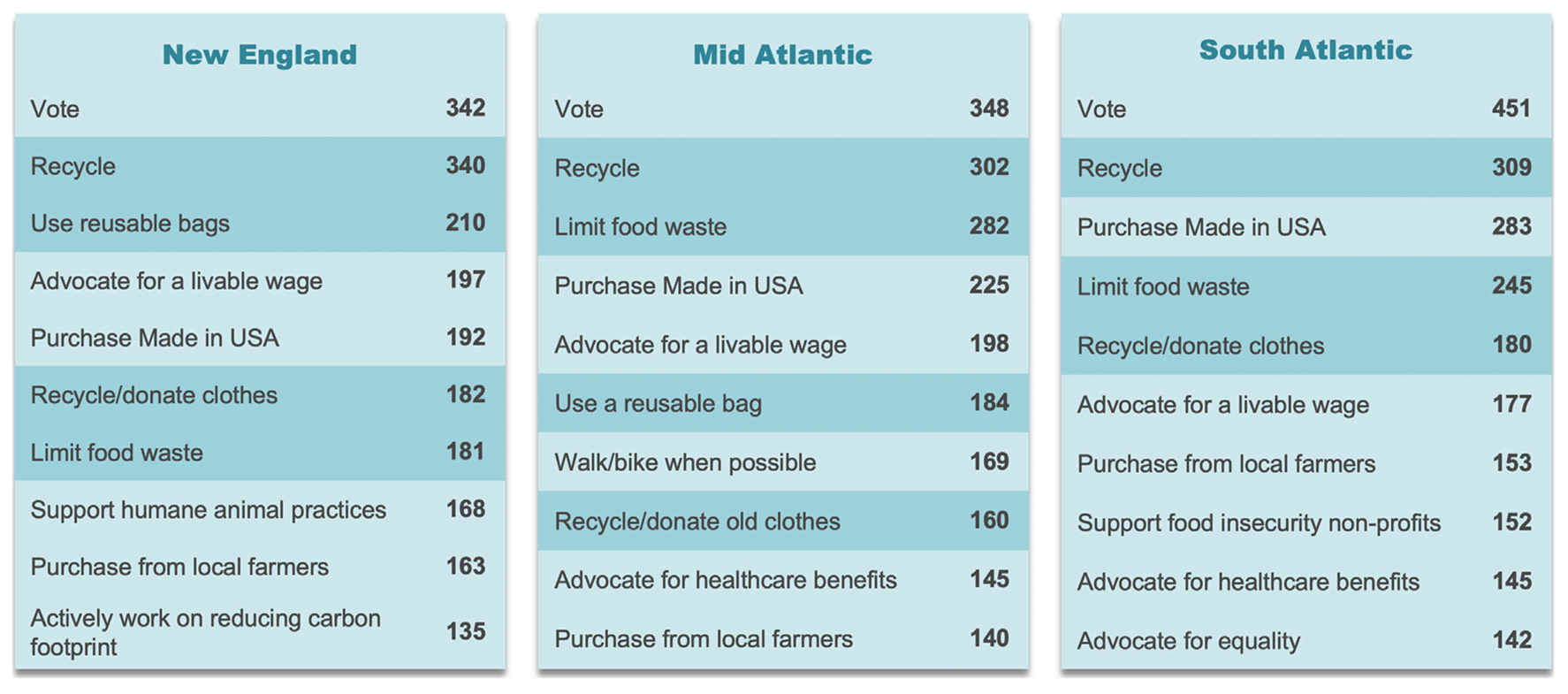
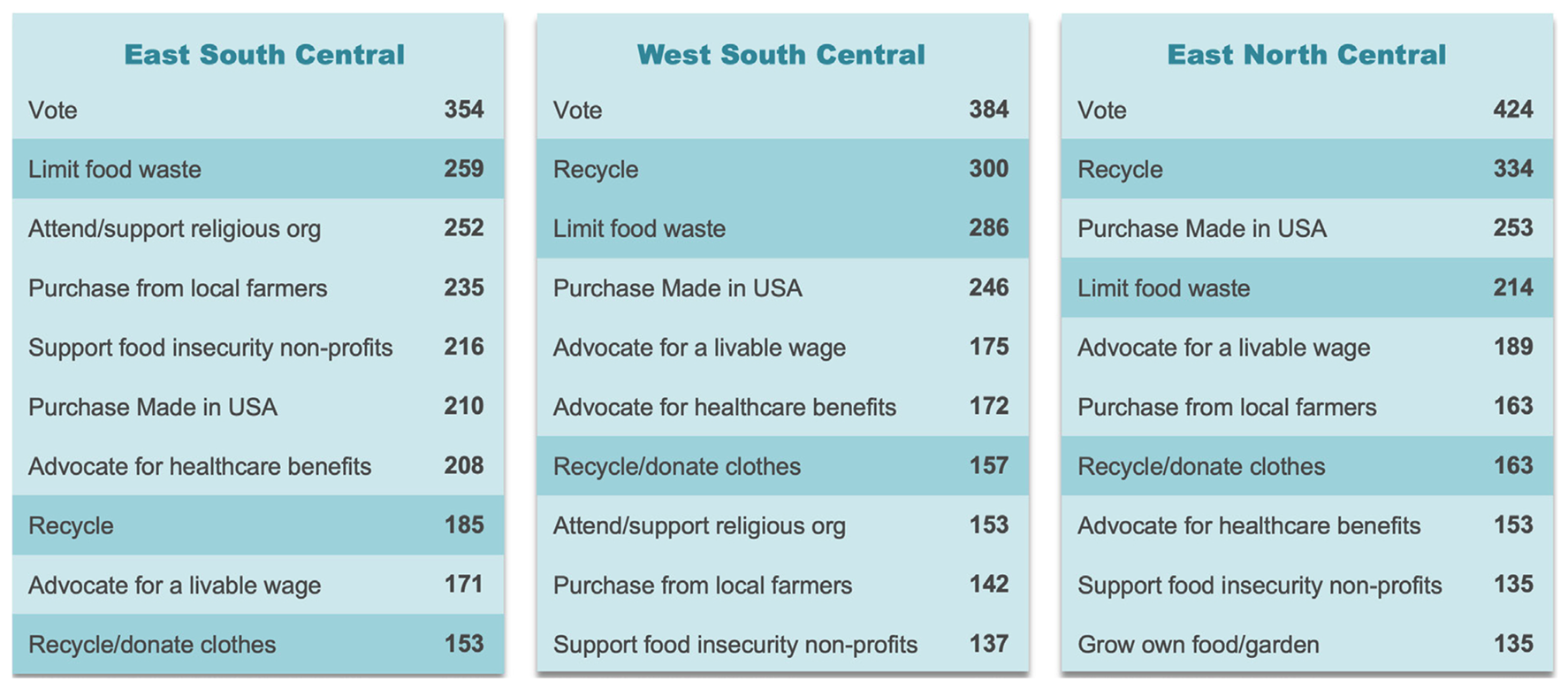
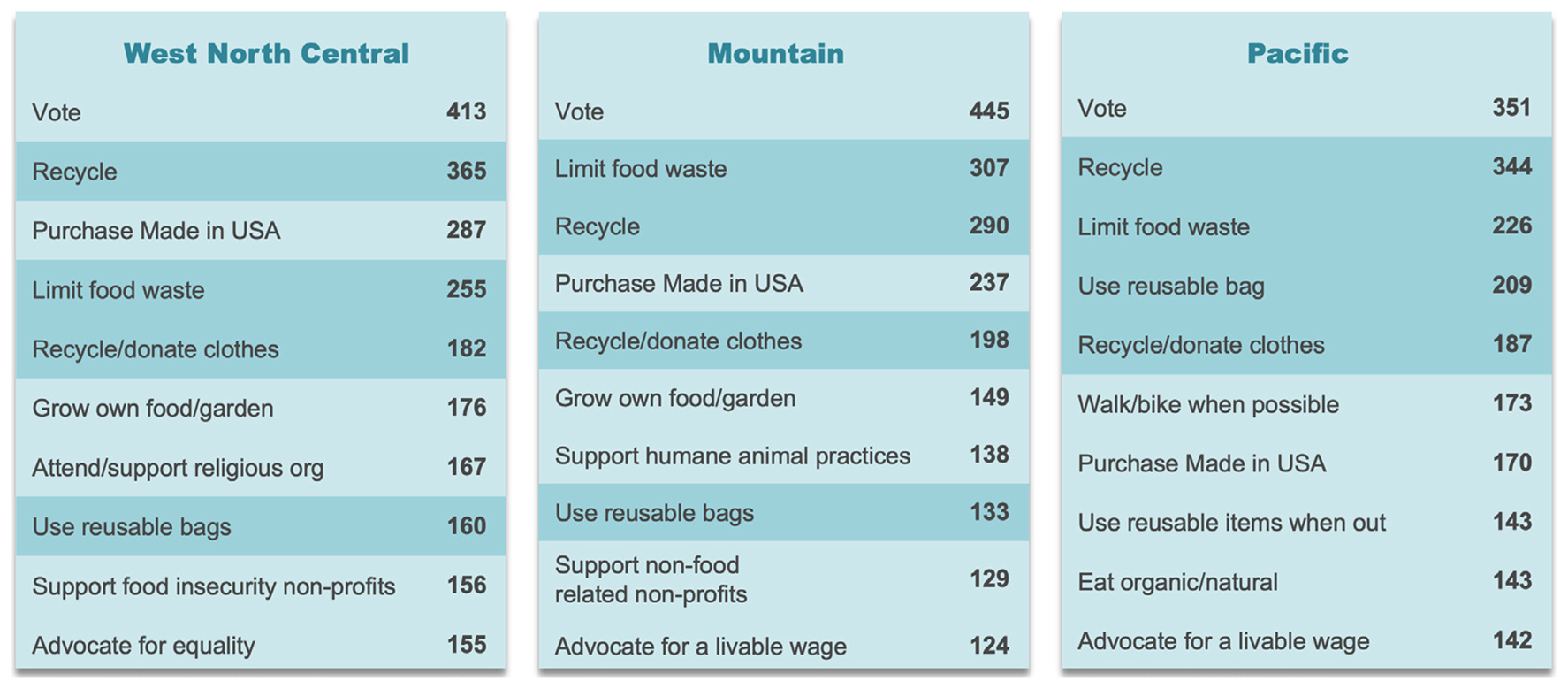
About the Authors
The Coca‑Cola Retailing Research Council
Meg Ham
Ahold / Delhaize
Leslie Sarasin
FMI
John Ross
IGA Inc
Rick Keyes
Meijer
Lisa Roath
Target
Michael Sansolo
Research Director
Susan Morris
Albertsons
Bill Anderson
HEB
Mark Tuffin
Kroger
Ted Balistreri
Sendik’s Food Market
Jonathan Berger
The Consumer Goods Forum
Jeff Owen
Dollar General
Jeremy Gosch
Hy-Vee
Greg Ramier
Loblaws
Anthony Hucker
Southeastern Grocers
Nicholas Sumas
Village Super Market Inc
Since its establishment as the first of the Councils in 1978, the Coca‑Cola Retailing Research Council has been dedicated to developing practical responses to strategic challenges experienced by the supermarket industry and its operators through extensive industry research. The North America Large Store Council is composed of executives who represent a variety of retailers, from small independent operators to the nation’s largest chains. The group oversees research initiatives conducted by independent third parties on issues of strategic importance to grocers. The ultimate aim of the Large Store Council is to generate ideas and solutions by retailers, for retailers.
Who is Murphy Research?
Murphy Research is a full-service market research firm that understands that groundbreaking research lies at the intersection of science and creativity. We are known for our innovative research design, rigorous executions, and enduring insights, and offer quantitative and qualitative services to help clients with market assessment, brand strategy, product development, customer loyalty and engagement, and communications research. To learn more, visit: www.murphyresearch.com.
- Research report title goes here
- Research report title goes here
- Research report title goes here
- Blog post title goes right here
- Blog post title goes right here
- Blog post title goes right here
- Blog post title goes right here


